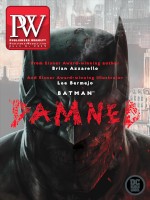New Yorker cartoonist Steiner’s series launch, The Good Cop (Severn, Sept.), introduces an honest Munich policeman struggling to do his job as the Nazis rise to power.
What inspired The Good Cop?
I was moved by two questions I have been interested in for a long time: First, how does an educated democratic society descend into fascism, as Germany did in the 1920s and ’30s? What are the actual mechanics of that decline? And second, why and how do individual citizens allow themselves to go along with this corruption of their lives and curtailment of their freedoms?
How did you approach depicting Hitler?
I could treat Hitler as a historical figure without any discernible private self and thus use him as background, a set of facts. Or I could give him private moments and weave him into the story. Making Hitler an actual character had obvious advantages. He would be a three-dimensional character. He and the other characters would be operating on the same plane, making fact indistinguishable from fiction, and making the story that much more compelling. If I did it right, the reader would be unable to tell which characters are real and which are fictitious, which events were real and which are my invention. Everything would have the same immediacy.
Several passages draw parallels between the Nazis’ rise to power and the current political situation in the U.S. Can you comment?
First the differences, which are enormous: Germany had just lost the First World War and had the humiliating and crippling Versailles treaty forced upon them. The central social democratic government in Berlin was weak and ineffectual. The economy was a fragile ruin. On top of that, fascists and communists were battling in the streets. Nothing like that is true here, despite the fact that our president gained office by claiming we were on the brink of disaster. Now the similarities: Hitler, like Trump, was a consummate liar.
He lied his way to power. During his rise, Hitler, like Trump, never had a majority of voters behind him. It was only after he was ruling with fear and terror—only then did he have popular “support.” Hitler also relentlessly attacked the press. He understood, as Trump does, if he could discredit the press, he could make his own truth, which his adoring followers would believe. What surprised me was the similarities between Hitler and Trump in small details. Their language sometimes is the same—Lügenpresse/fake news. Their tone is often the same. Their demeanor is similar—the sneering, the name calling, the contemptuousness.



 Volume 266
Issue 27
07/08/2019
Volume 266
Issue 27
07/08/2019





